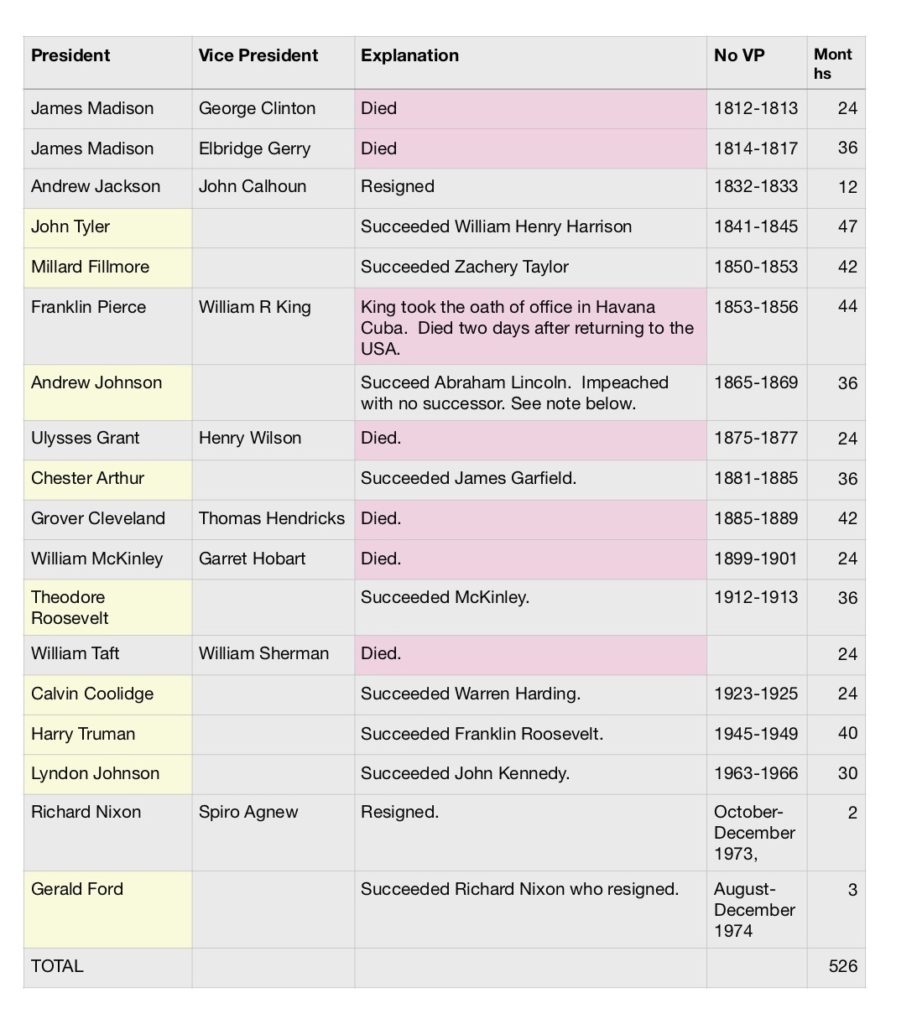How often has the office of Vice President been vacant? Or in other words, how many US presidents have served part or all of a term in office without a vice-president? More than one might think. Read on for the answer and the explanation.
Eighteen presidential terms were served in whole or in part without a VP. One president who served two terms had no VP for part of each term. A blank space in the VP column means that the VP became President.
The situation can arise in one of two ways. The incumbent president may leave office by death or resignation, yielding to the VP leaving no VP. Or the opposite may occur. The VP may leave office through resignation or death. In either case once the office of VP is vacant and there was until the 25th Amendment in 1967 no constitutional means to fill the office. Two VPs and one President have resigned.

That is about 40 years without a VP between 1812 and 1974. That is about a quarter of the total years.
The most curious example would be Andrew Johnson, the Vice-President who succeeded Abraham Lincoln. If he had been impeached there was no Vice President to succeed him. According to the constitution at the time the office would have gone to the President of Senate, Benjamin Wade of Ohio (who was an advocate of female suffrage), and that made him unacceptable to many Senators. To further complicate the picture, Wade had not been re-elected and, as a lame duck, his term would expire before the remainder of Johnson’s term, and that would mean… [Trouble].
Three incumbent presidents were not re-nominated by their party: Tyler, Fillmore, and Pierce. In the cases of Tyler and Fillmore that was due to internal ruptures of the Whig Party. The Democrats declined to re-nominate Pierce.

